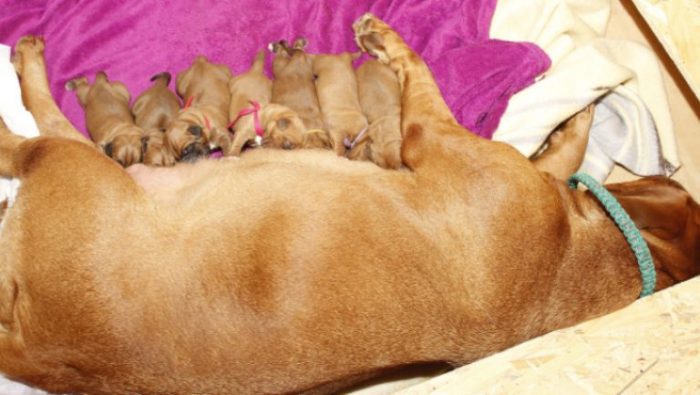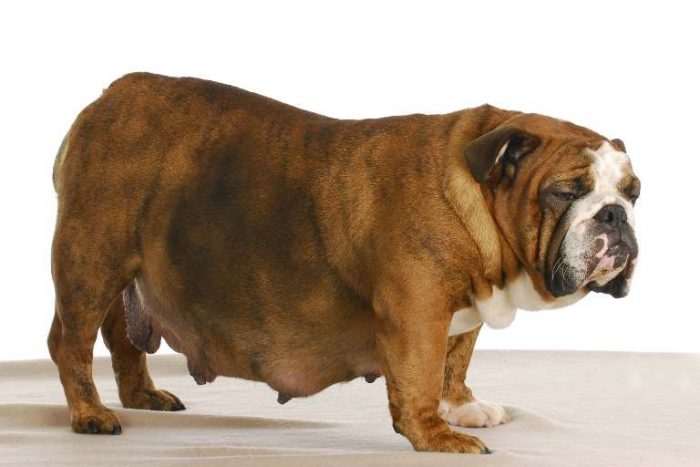The medical term for difficult birthing experience is called dystocia and the reason for this condition may either be maternal or fetal. Difficulties that can impede birth in dogs may start at any stage of labor and can lead to severe consequences for both the mother and unborn pup. This write-up is poised to address the reasons a dog refuses to give birth, in addition to other important factors concerning whelping.
Table of Contents
How Long Does Sexual Maturity Take In A Bitch?
Puberty or sexual maturity in female domestic dogs can occur from six months to 12 months of age. This is equally true for their male counterparts. However, puberty in larger breeds can be delayed for up to a couple of years. An intact bitch may fall pregnant during the initial heat cycle called proestrus; however, experts recommend that breeding should start from the second period of heat.
Why Does My Pregnant Dog Refuse To Give Birth?
When a dog refuses to give birth, the problem might either be fetal or maternal. When the cause of a birth complication is fetal, it may be that the size of the fetus is too large or the presentation is abnormal. The position of the fetus or its posture in the birth canal may also be abnormal. Again, fetal death can also impede birth.
When impeded birth has to do with maternal factors, the reasons are just numerous, from ineffective abdominal press to poor uterine contractions and even inflammation of the womb as a result of infection. Some cases of difficult labor can be laid at the doorstep of gestational diabetes, pregnancy toxemia, previous pelvic injuries, pelvic immaturity, and abnormal conformation resulting in an abnormal pelvic canal.
Also, bitches with a naturally narrow pelvis or an abnormality in their vaginal vault will not give birth easily. Besides, when the vulvar opening is abnormal, the cervical dilation is not enough, or lubrication is not adequate, a female dog may face difficult labor. Other reasons are uterine rupture, uterine torsion, cysts, adhesion, or uterine cancer from previous inflammation.
Does My Pregnant Dog Need an Ultrasound?
Yes, an ultrasound is necessary for pregnant bitches; for one, it is used in detecting the early stages of pregnancy. An ultrasound is recommended by the vet between the 25th and 35th days of canine gestation and in addition to detecting pregnancy, the machine can also determine the status of the fetus, whether dead or alive. This is done by registering the heartbeats of the fetus. With ultrasound, an expert will be able to calculate fetal gestation age and rule out other grounds for uterine distension.
How To Know When a Dog is In Labor and What to Do

Labour is expected to kick in at the end of a gestation period and it comes in three stages:
Stage One
Every pet parent with a pregnant bitch will have to look out for the first stage of labor, this may last from 12 hours to one full day. However, this stage may prove a bit difficult to decipher as it is not often outwardly noticeable. It is characterized by increasing contraction in the bitch’s uterine walls both in frequency and strength, but there won’t be any signs of visible contraction. Rather, the following symptoms may occur:
- Altered behavior and disposition.
- Reclusive behavior.
- Restlessness.
- Loss of appetite.
- Intermittent nesting.
- Panting.
- Vomiting.
- Clear discharge from the vagina.
Stage Two
The puppies come forth during the second stage which can last from one hour to a full day. Important to note that delivery is one puppy at a time – normal delivery takes half an hour to one hour, but there are some that can take up to two hours. With that said, dog owners should be told the number of puppies expected, so as to know when the bitch is done. But if they suspect that the dog is experiencing difficulty, or there are still some puppies stuck in the uterus that has refused to come out, they should call the vet immediately.
Stage Three
This is the stage where the placenta gets delivered and this occurs almost at the same time as stage two. This stage can only be completed once all the placentas are out and take place shortly after the completion of the second stage.
A whelping bitch can be conveniently managed at home but the vet may need to come in when labor exceeds 24 hours or when it takes over two hours for the next puppy to emerge. Both are considered signs of serious complications in canine labor. Both the fetus and the whelping bitch may be at risk.
The Reproductive Cycle in Dogs
With the reasons a dog refuses to give birth well understood, we must try to know a dog’s reproductive cycle. Intact bitches are expected to be on heat approximately once every six months; however, this may come with some variations depending on the breed of dog. In all, a bitch’s heat cycle lasts from 18 to 20 days and is broken down into four stages. Breeders leverage these stages to determine the best time for breeding.
The stages include:
- Proestrus
- Estrus
- Diestrus
- Anestrus
The proestrus stage can last up to nine days. This first stage of the heat cycle is when the bitches will begin to attract their male counterparts; however, they won’t accept the advances from the males until stage two kicks in. The proestrus stage comes with a couple of signs, which include swollen vulva and bloody discharge.
Read Also: Why Do Dogs Howl At Sirens And Bells? 5 Interesting Myths And Facts
The second stage is estrus, which may last from three to four days, if short and seven to 11 days, if long. At this stage, the bitch begins to accept advances from the males. Some breeders would call in the vet to take a blood test and vaginal smears during proestrus and estrus stages in a bid to know the optimal time for breeding. This stage is characterized by an enlarged and softened vulva and decreased discharge that is lighter in color.
The third stage, which is diestrus, is considered the final stage in a bitch’s heat cycle and occurs around the 14th day. Within this stage, the female dog’s discharge tappers off as it turns redder – the vulva goes back to its normal size, and mating will no longer be permitted. The disappearance of all signs of discharge and swelling means that the heat period is complete.
The time that elapses between one heat period and the succeeding one takes up to half a year and is called anestrus.
